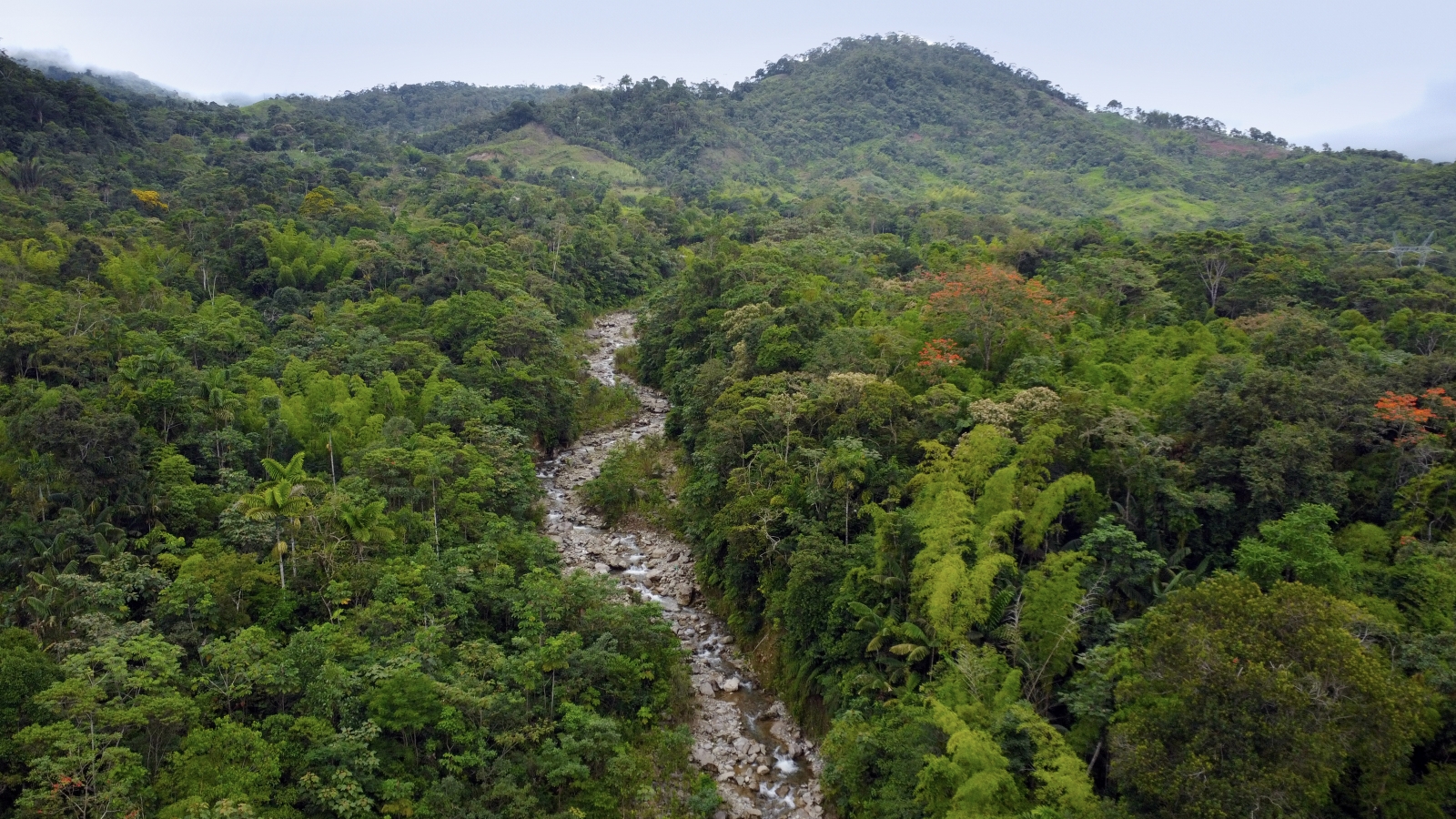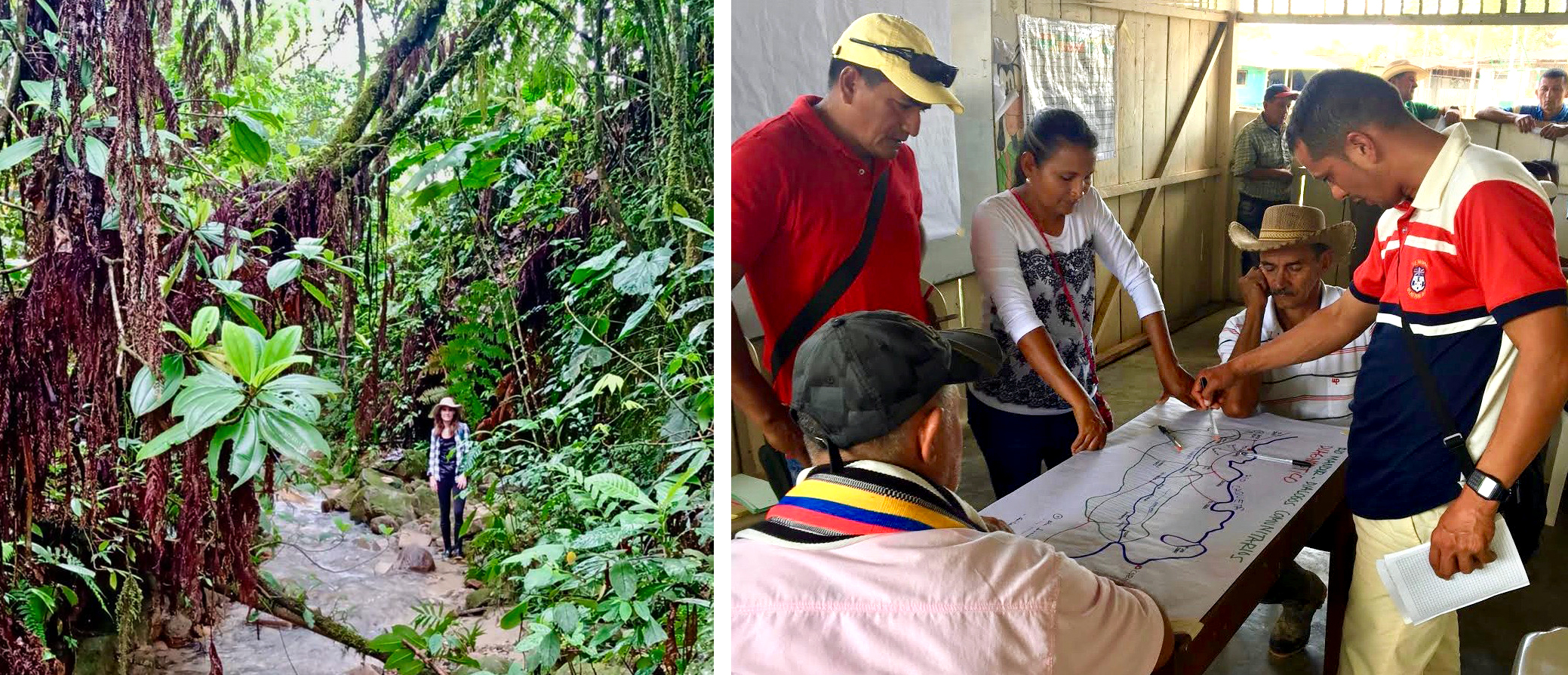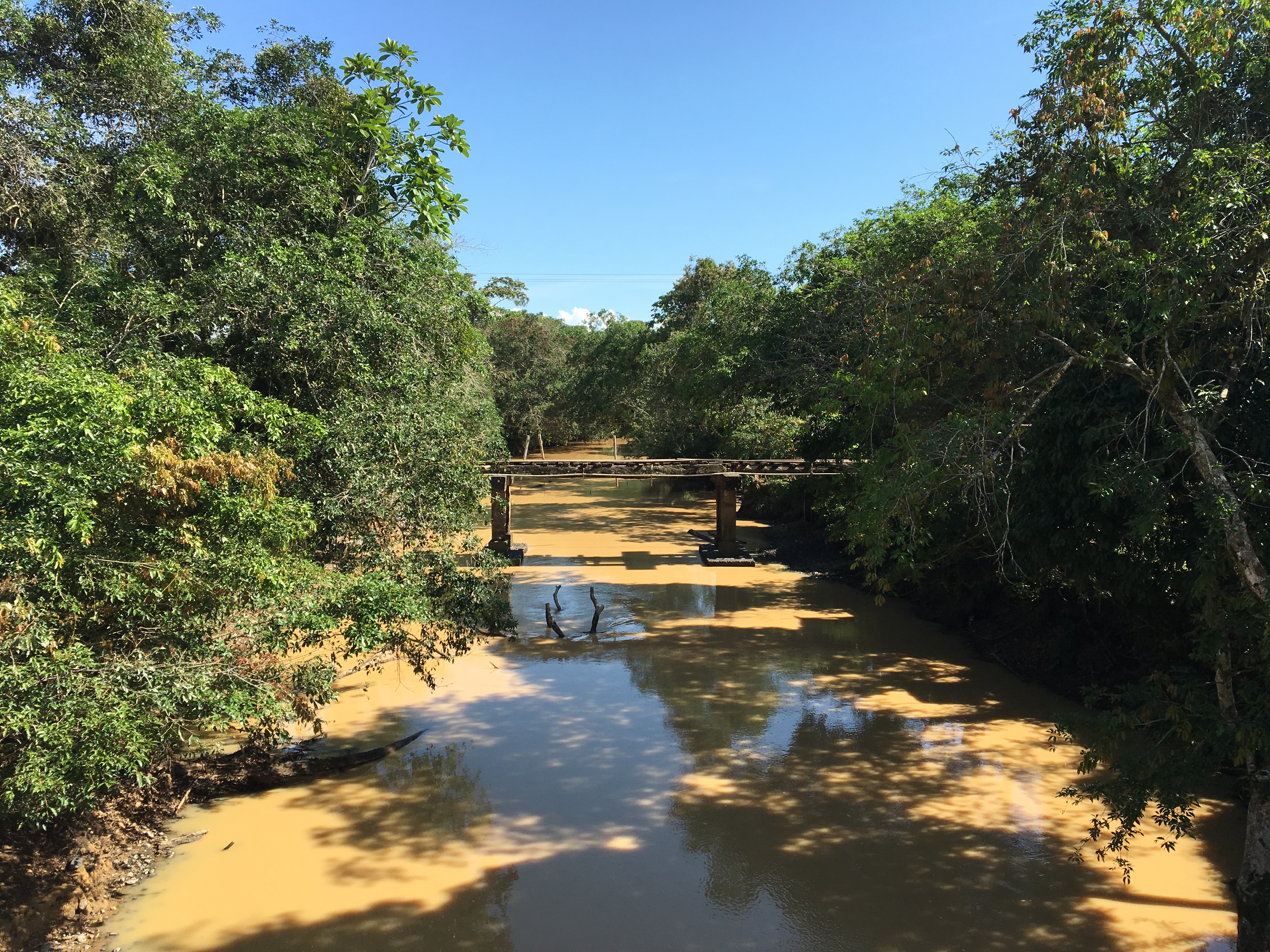The Stories of a War-Scarred Colombian Rainforest
Through her research, Kristina Lyons, Associate Professor of Anthropology, is relaying the tales of the land’s suffering, as well as its enduring practical and spiritual importance to its residents.

The setting felt like a character.
It’s a sentiment often echoed when the world-building of a story takes on a larger-than-life feel, connecting on a deeper level with the reader or viewer and reinforcing powerful themes. When Kristina Lyons, Associate Professor of Anthropology, visited the Colombian Amazon for the first time in 2004, she felt the ache of environmental pain in her surroundings, and so began her quest to relay the story of the land’s suffering, as well as its enduring practical and spiritual importance to its residents.
This initial visit saw Lyons in the role of a human rights activist, surveying the policy consequences of the U.S. war on drugs, launched in 1999 under then-President Bill Clinton and dubbed “Plan Colombia.” Lyons witnessed firsthand the effects of aerial chemical spraying—geopolitical techniques intended to eradicate illicit crops, but which also greatly affected human and environmental health. She also saw the aftereffects of the detonation of oil pipelines and oil tanker trucks by armed actors.
“Violence—whether acts of brute force, epistemic forms of violence, or through development and infrastructural projects—is never only a human experience. The soils, watersheds, rivers, forests, and more than human beings are also casualties of war, injustice, and dispossession,” says Lyons.
From Soil to Water
When Lyons first arrived in the Amazon, local communities assumed that she was there to examine the famous terra preta (“dark earth soils”), a popular research topic for visiting archeologists and anthropologists. However, she was keen on learning about diverse Amazonian soils, including what people refer to as suelos salados (“salty soils”), which are areas with concentrated amounts of nutrients and salts exposed at their surface. These soils attract all kinds of fauna to drink the water and lick up the salts and the minerals.
“I remember people telling me that the nearest place with salty soils was full of landmines. I imagined all the Amazonian mountain deer, the Andean speckled bear, monkeys, and birds—all the paws and claws that would step down and be blown to bits,” says Lyons. “It was a speculative and horrific image, but it made it clear to me how ecological ruptures were happening due to the violence.” Lyons’ experiences in the Andean-Amazonian province of Putumayo led to the manuscript Vital Decomposition: Soil Practitioners and Life Politics, which presents an ethnography of human-soil relations.

Left: Kristina Lyons, guardian of La Yegua Stream in La Hojarasca Reserve in Mocoa, Putumayo, March 2023. A guardian is a representative who helps organize protective efforts. (Photograph courtesy of Kristina Lyons) Right: Community mapping of the Mandur River watershed in Galilea, Puerto Guzmán, October 2018. (Photograph by Kristina Lyons)
After almost 10 years of research accompanying the life-worlds of small farmers that formed the basis of her book, emerging situations in the territory led Lyons down a new path of research, one that focuses on another vital component of Andean-Amazonian ecosystems: watersheds.
“I was on a trip with the National Center for Historical Memory where they were interviewing and filming people about territorial land-based appropriations and dispossession and displacement in regions controlled by FARC [the Revolutionary Armed Forces of Colombia],” Lyons says. “I had the chance to speak to a woman who was the president of a rural settlement, and she stepped aside and in a kind of whispered voice pointed out to me how the river that we were standing next to was converting into a sand bank.”
This woman explained to Lyons that the water, which was not only the main source for human and animal consumption but also for transportation, washing, bathing, swimming, and recreation, was being filled with sediment by illegal mining happening at the upper part of the watershed.
Such disclosures are often made with great trepidation, Lyons says. “She was very clear to me that in any moment, armed actors could come in and annihilate the community and no one would know about it. Hence, why she was so apprehensive about being public about the situation of the river’s degradation and potentially starting conflicts with her neighbors upriver.” This conversation and situation motivated Lyons to find a way to work with the communities of the watershed “with the hope that no community leaders or communities would be alone, vulnerable, and isolated in trying to deal with socio-environmental conflicts that require integral solutions at a watershed scale.”
An Ear to the Ground
This goal led to a participatory action-research project called Rivers and Reconciliation, which Lyons launched in collaboration with a local NGO called Fundación ItarKa; an artist, Marco Pinto, artists that founded the organization Mundos de Papel; and the rural communities of the Mandur River watershed, which forms part of the Caquetá River watershed and the macro watershed of the Amazon River.
“This project was inspired by the idea of reconciliation as a more-than-human process,” Lyons says. “We searched to create methodologies that would support reconciliatory processes between human communities in conflict, but also ways to repair ruptured relations between human communities and the other beings that make up a watershed, such as riparian forests, aquatic ecosystems, and spiritual ancestors.”
Lyons released a subsequent article building on the project titled, “Rivers and Reconciliation: Elaborating the Socioecological Memory of War through Science and Arts-Based Practices,” which she is turning into a book. The plan is for each chapter to focus on a particular body of water in the Andean-Amazonian territory: ancestral lagoons, wetlands, torrential and meandering rivers.
Particularly important to Lyons is learning the history and ancestral names of bodies of water. “I just finished a book chapter about the story of the Taruca stream, which is the word for deer in the language of Inga Indigenous people. Hydrological classifications in Colombia are based on the terms as rivers, streams, and rills [small streams], which do not tell us anything about their personality. The name “deer” tells you very particular and important things. Deer jump and leap. They move and change direction. This is what the Taruca does.”
This recovery of the names, histories, and memories of water bodies is important not only to recognize and respect the ancestral memory of Indigenous communities, Lyons adds, but also in terms of disaster risk prevention, climate change adaptation, ecological restoration, and territorial planning decisions that “should be based on the knowledge of local communities and the memories and personalities of the diverse bodies of water in the region. As an engaged anthropologist, I think we must continue to create opportunities for intercultural, transgenerational, and transdisciplinary dialogues,” she says. “We cannot depend on engineers, scientists, and lawyers alone to solve these issues.”



